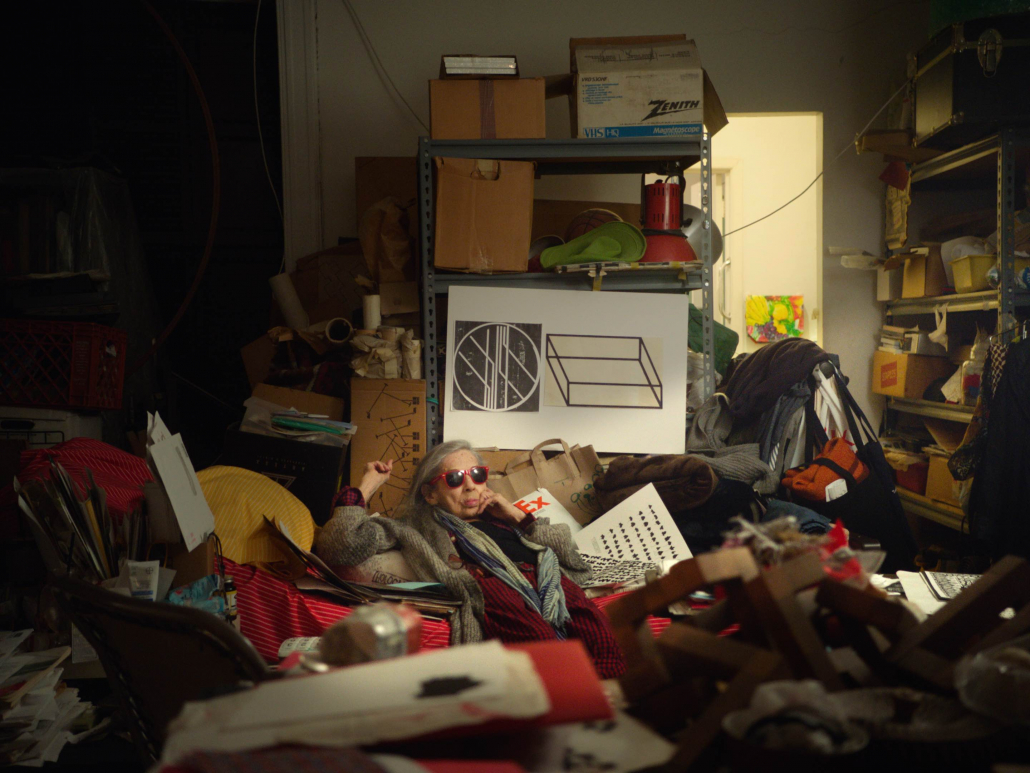The documentary Dreaming Walls: Inside the Chelsea Hotel has captured a particular moment in time. A few long-term residents of the legendary building at 222 West 23rd Street in Manhattan are still hanging in there after several years of constant and oppressive building noise. They're gamely holding on to its artistic and counter-cultural spirit, keeping their values and beliefs intact, living through what they hope are the last stages of the Chelsea's redevelopment, hoping they'll not be forced out once it becomes a luxury boutique hotel.
It is not just an idea thar we see dying. The closing credits note with “†”s that at least two of the residents who appear in the film have died since the film was made. One is the visual artist Bettina Grossman (pictured below), whose slow trudge around the Chelsea corridors provides the film's conclusion.
The background here is the complex web of more than half a century of cultural associations and resonances. These exist in just about every art form and have everything to do with the involvement of a father and a son, David and Stanley Bard. David bought an ownership stake in the building in 1947. Then, from the time David died in 1964, Stanley made the hosting of an artistic community in the building his life’s work, attracting the likes of Bob Dylan, Janis Joplin, Leonard Cohen, Patti Smith, Robert Mapplethorpe, and Madonna. He was ousted in a power struggle with other owners in 2007 and died of a stroke in 2017.
Fast forward to the end of April 2018. Young Belgian film-makers Amélie van Elmbt and Maya Duverdier sneak out of a screening in the same street, walk into the building – or rather the building site – and the first person they meet and befriend is the dancer and choreographer Merle Lister. They are completely captivated by her and decide there's a film to be made.
Van Elmbt and Duverdier got to know more people at the Chelsea and shot about 150 hours of film. They then spent a year interspersing what they'd filmed with archival footage (including some from a 1981 BBC Arena documentary available on iPlayer). Van Elmbt and Duverdier described this process as “creating a dialogue between the different types of footage we had.”

The film illustrates the Chelsea's story rather than tells it, the context assumed and alluded to rather than actually explained. The directors were above all entranced by unreality, by the “ghosts” and particular “energy” that inhabit the building, and, understandably, wanted the more colourful and extreme characters to shine. This way of working is entrenched in Belgian culture, from the early surrealists to a more recent figure in the visual artist and cartoonist Jean-Michel Folon. One of his most famous dictums describes exactly what van Elmbt and Duverdier have done: “It is not the reality that counts, or the poetry. But the passage from one to the other, and the surprises they make."
Dreaming Walls: Inside the Chelsea Hotel is a slightly rambling portrait of the very end of an era. An uneven film, it is nonetheless fascinating for the questions it raises and the thoughts it provokes.














Add comment